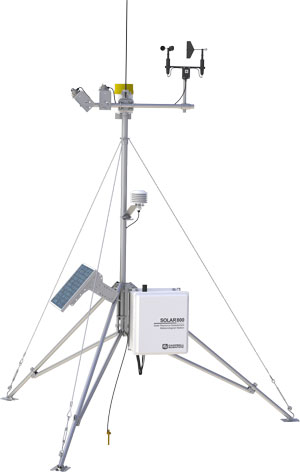 Researching the site conditions of an area for a potential solar application is very important for the success and health of the project. Which variables should installers pay the most attention to?
Researching the site conditions of an area for a potential solar application is very important for the success and health of the project. Which variables should installers pay the most attention to?
Solar resource is the most important site condition to have reliable information on, according to Matt Perry, manager of Renewable Energy Group at Campbell Scientific. High quality solar irradiance data is critical for site selection and system design, he said, as well as for estimating, validating and forecasting power plant performance.
“Solar resource and power production are very tightly coupled,” said Gwendalyn Bender, product manager for Assessment Services at Vaisala. “Understanding how the solar resource has varied for the last 10 or 20 years is a substitute for normal performance variation over the lifetime of a project.”
Bender added that most sites will not have onsite or nearby observational equipment for over 10 years, however, satellite-based datasets from companies like Vaisala can provide high-quality long-term datasets. These datasets can be calibrated with local observations for higher accuracy.
Weather parameters also play a large role in solar site assessment. Perry cited weather as a defining PV-operating condition, as it provides a connection to historical and satellite data for accessing annual solar resource variability. He mentioned ambient temperature and wind speed as two weather variables to consider, each affecting the irradiance and operational PV-module temperature.
Elaborating on temperature, Bender explained that high irradiance usually goes hand-in-hand with high temperatures, which lead to reduced panel efficiency and energy output. However, some locations may have high irradiance with low temperatures during the winter or spring months.
“If you only have data on irradiance, then you’re missing a piece of the puzzle that explains energy output,” said Bender. “Knowing the temperature profile of a site can also help you choose the best equipment to handle weather extremes the system may experience—different manufacturers specialize in different temperature conditions.”
The precipitation profile, including snowfall, must also be considered for maintenance purposes. The amount and type of precipitation at a site affects soiling loss, which applies to pre-construction energy estimates and factors into cleaning schedules during operation of the solar system, as well.
“Knowing the amount of snow a region receives and when it will fall can help developers make pre-construction plans for handling snow loads, and aim to control its influence on production,” Bender said.
By: Joshua Smalley, SPW research assistant
